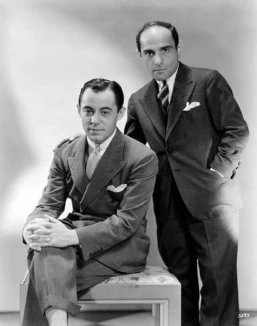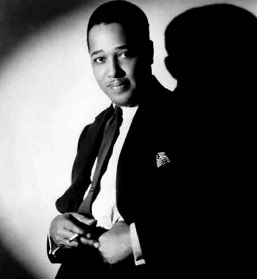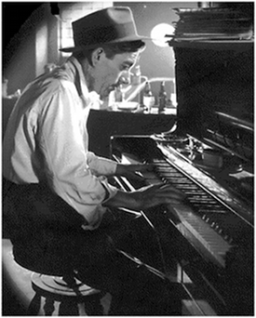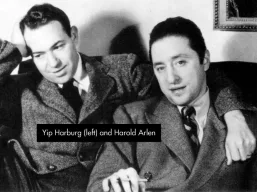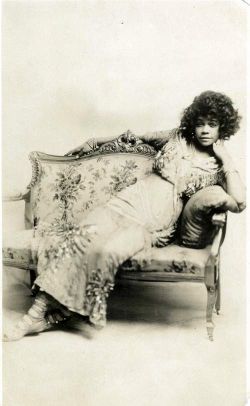Stormy Weather
______________________
page originally published on 25 March 2010; latest edit: 17 June 2020
______________________
Stormy Weather (m. Harold Arlen, w. Ted Koehler)
Excerpt from an article at WICN.org:
 First recorded by the Leo Reisman Orchestra with Harold Arlen on vocals for the RCA Victor Records label. Introduced by Ethel Waters with the Duke Ellington Orchestra in the 1933 Cotton Club Parade revue.
First recorded by the Leo Reisman Orchestra with Harold Arlen on vocals for the RCA Victor Records label. Introduced by Ethel Waters with the Duke Ellington Orchestra in the 1933 Cotton Club Parade revue.
The creation of “Stormy Weather” was anything but turbulent. At the time they composed the song, Harold Arlen and Ted Koehler were writing music for shows at the Cotton Club, the premier Harlem nightclub in the 1920s and 1930s, where wealthy white patrons paid a stiff cover charge of $3.00 to watch celebrity black entertainers and to drink beverages made illegal by Prohibition. Arlen and Koehler worked at the Cotton Club from 1930 to 1934, writing songs for two shows per year. At a party in 1933, while fiddling around at a piano, they wrote “Stormy Weather” in less than 30 minutes. With Cotton Club entertainer Cab Calloway in mind to sing the song, Arlen patterned the song structure around Calloway’s trademark “hi-de-ho,” what Arlen called “Cab’s front shout,” and lyricist Koehler added the words. Then they left the party to get a sandwich, just glad to have another song out of the way for the 1933 Cotton Club Parade show.
Later they were jolted to learn that Cab Calloway, who had been in the 1932 Cotton Club Parade, had found other work and wasn’t going to appear in the 1933 revue. The Duke Ellington Orchestra was signed instead, and Ellington wasn’t a vocalist. Arlen and Koehler needed a singer for their new song. Dan Healy, producer of the 1933 Cotton Club Parade, informed them that Ethel Waters had recently returned to New York and may be available to sing “Stormy Weather.” Since 1931 Waters had been in Chicago, employed by gangster Al Capone to work his nightclub circuit. Other nightclub owners wouldn’t hire her for fear of offending Capone, and her career there was frozen to the narrow confines of his clubs. She got out of Chicago early in 1933, relieved to be back in New York. In his biography of Harold Arlen, Edward Jablonski quotes Waters: “I’m a child of the underworld,” she said, but “I must say that I prefer working for people who never laid eyes on an Italian pineapple [hand grenade] or a sawed-off shotgun. I went back to New York glad to be alive.” Arlen and Koehler arranged to meet her to demonstrate the song. It matched Waters’ current blue mood, with her career in transition and her second marriage having just ended badly, and she agreed to sing it in the show. Jablonski writes, “Arlen and Koehler were happy; they had their star (who could do more justice to the song than Calloway), and she had her song: “Stormy Weather.”
See also my page:
_________________
Leo Reisman and his Orchestra, vocal: Harold Arlen — recorded on 28 February 1933 (Victor matrix BS-75329), and issued in March 1933 on the single Victor 24262, b/w “Maybe I Love You Too Much” (B-side vocal by Fred Astaire)
.
Matrix BS-75329 was also reissued on 12 September 1934 on the single Victor 24716, as the B-side of “Night and Day” (A-side vocal by Fred Astaire).
audio file, VBR MP3 (7.5 MB), from archive.org:
.
Ethel Waters — issued on the 78 rpm single Brunswick 6564, c/w “Love is the Thing” (m. Victor Young, w. Ned Washington); both sides recorded on 3 May 1933
.
Charlie Palloy – Crown label recording, 1933
In the article The First Crooners, Volume Two: 1930-1934, Ian Whitcomb says:
Charlie Palloy is a real obscurity. Obviously he modeled his style on Russ Columbo, but all we know is that he played guitar, led a band for a while, and recorded for the short-lived Crown label. His careful pronunciation of an “s” borders on the sibilant.
.
Morton Downey – 1933
The video provider at Dailymotion.com says:
Good shots of the guests and stars dancing to the jazz music of Jack Harris. There are numerous celebrities at the venue including the film star Thelma Todd, Nelson Keys, Dorothy Dickson, Ruth Roland and the composer Horatio Nicholls. Good L/S’s and M/S’s of Morton Downey sitting at piano singing ‘Stormy Weather’
.
Duke Ellington and his Orchestra, vocals by Ivie Anderson – from the short film Bundle of Blues (1933)
a. extracted song
.
b. complete film, or nearly so — Duke introduces Stormy Weather at around 1:40.
.
1943
From Wikipedia article on the 1943 film Stormy Weather:
The film is one of two major Hollywood musicals produced in 1943 with primarily African-American casts, the other being MGM’s Cabin in the Sky, and is considered a time capsule showcasing some of the top African-American performers of the time, during an era when black actors and singers rarely appeared in lead roles in mainstream Hollywood productions, particularly of the musical genre.
Stormy Weather, which takes its title from the 1933 song of the same title (which is performed near the end of the film), is loosely based upon the life and times of its star, dancer Bill “Bojangles” Robinson. Robinson plays “Bill Williamson”, a natural born dancer who returns home in 1918 after fighting in World War I and tries to launch a career as a performer, along the  way wooing a beautiful singer named Selina Rogers, played by Lena Horne in one of her few non-MGM film appearances (and one of only two films from the 1930s-40s in which Horne played a substantial role). The character of Selina was invented for the film; Robinson did not have such a romance in real life. Co-starring is Dooley Wilson as Bill’s perpetually broke friend.
way wooing a beautiful singer named Selina Rogers, played by Lena Horne in one of her few non-MGM film appearances (and one of only two films from the 1930s-40s in which Horne played a substantial role). The character of Selina was invented for the film; Robinson did not have such a romance in real life. Co-starring is Dooley Wilson as Bill’s perpetually broke friend.
Other notable performers in the movie were Cab Calloway and Fats Waller (both appearing as themselves), the Nicholas Brothers dancing duo, singer Ada Brown, and Katherine Dunham with her troupe of dancers . With a running time of only 77 minutes, the film features some 20 musical numbers. This was Robinson’s final film (he died in 1949), and Waller himself died only a few months after its release.
______________________
Lena Horne in the film Stormy Weather (1943)
.
1952
Billie Holiday – Session #69 New York 27 July 1952 Billie Holiday & Her Lads of Joy (Clef) –Joe Newman (tp) Paul Quinichette (ts) Oscar Peterson (p) Freddie Green (g) Ray Brown (b) Gus Johnson (d) Billie Holiday (v)
.
Judy Garland
The Judy Garland Show, Episode 5; taped 30 July 1963 — Guests were Tony Bennett and Dick Shawn.
.
Recorded in London 2 August 1960 with Orchestra conducted by Norrie Paramor. Originally released on LP Judy in London, 1972.
.












